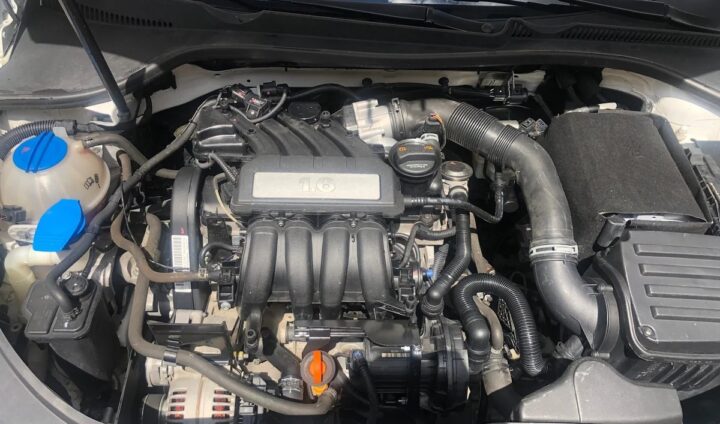
Volkswagen 1.6 BSE engine
Content
The Volkswagen 1.6 (1595 cm3) BSE engine was produced from 2002 to 2015, it was installed on the Passat, Golf, the workhorse Caddy and Touran, on some Seat and Skoda.
Technical specifications
| Engine displacement, cc | 1598 |
| Maximum power, hp | 102 |
| Maximum torque, N * m (kg * m) at rpm. | 148 (15) to 3800 |
| Fuel used | Gasoline AI-95 |
| Fuel consumption, l / 100 km | 6.8 – 8.2 |
| engine's type | Inline, 4-cylinder |
| Add. engine information | multipoint fuel injection |
| Maximum power, h.p. (kW) at rpm | 102 (75) to 5600 |
| Compression ratio | 10.5 |
| Cylinder diameter, mm | 81 |
| The piston stroke, mm | 77.4 |
| CO2 emission in g / km | 167 – 195 |
| Valve drive | OHC |
| Number of valves per cylinder | 2 |
- The power unit has an aluminum block of 4 cylinders in the basic version (diameter 81 mm, in-line arrangement) with "wet" cast-iron sleeves. The compression ratio is 10,5: 1, and the piston stroke is 77 mm.
- Injection type - MPI (multipoint distributed).
- The proven working resource is 600.000 kilometers.
- Timing belt drive.
- The location of the engine in the car is transverse to the front.
- Moderate driving dynamics with relatively low gas mileage.
The desired interval between service inspections is 15.000 km. It is believed that the motor is designed for increased loads and operation in difficult conditions. For example, cold weather, long driving, long standing in a traffic jam. In any case, do not overload the engine too much.
Where is the engine number
The engine number is located on a horizontal platform (under the ignition module), at the junction of the gearbox and the cylinder block. It's dotted, but easy enough to read.
Volkswagen 1.6 BSE modifications
- BFQ (Euro 4) - basic modification with Simos control unit 3.3 / 102 hp. (75 kW) at 5 rpm (on 600th gasoline).
- BGU (Euro 4) - a modified version of the previous one for a new platform - PQ35. Works on 95th gasoline.
- BSF (Euro 2) - lowered economy rates, without catalyst purge, gasoline - 95th. Power - 102 hp (75 kW) at 5 rpm, 600 Nm at 155-3800 rpm
- CCSA (Euro 5) - runs on a mixture of gasoline with ethanol (E85 fuel), 155 Nm at 3800-4000 rpm.
- CHGA (Euro 5) - designed to work on reduced gas, 98 hp. (72 kW) at 5 rpm, 600 Nm at 144 rpm.
Problems
- The gas distribution mechanism often fails, despite the fact that the injection system is quite durable.
- If the timing belt breaks, you should rush to replace it, as the valves are bent.
- The thermostat and ignition components also need to be closely monitored - these are not the engine's greatest strengths.
Tuning VW 1.6 BSE
- Installation of a split gear is possible;
- You can increase the exhaust section (up to 63 mm), ECU firmware - a new version of the on-board computer will be needed for normal operation.
- Camshaft (sport), roller (D. Dinamic, for example), cold air intake - will increase engine power by 5-10 horsepower.

3 comment
BSE TOP!
It's a great simple and cheap engine to maintain. Instead of doing some rubbish FSI / TFSI etc. they should concentrate a bit and create a new modern engine from the old school. Cast iron + aluminum with a power of 2.0 8v 150 hp this will be their new success. Everyone will want to buy it!
Gavrila V
What is the difference between the two 1,6 petrol engines...APF and BSE?
Yurchik
AKL should have been left, even simpler